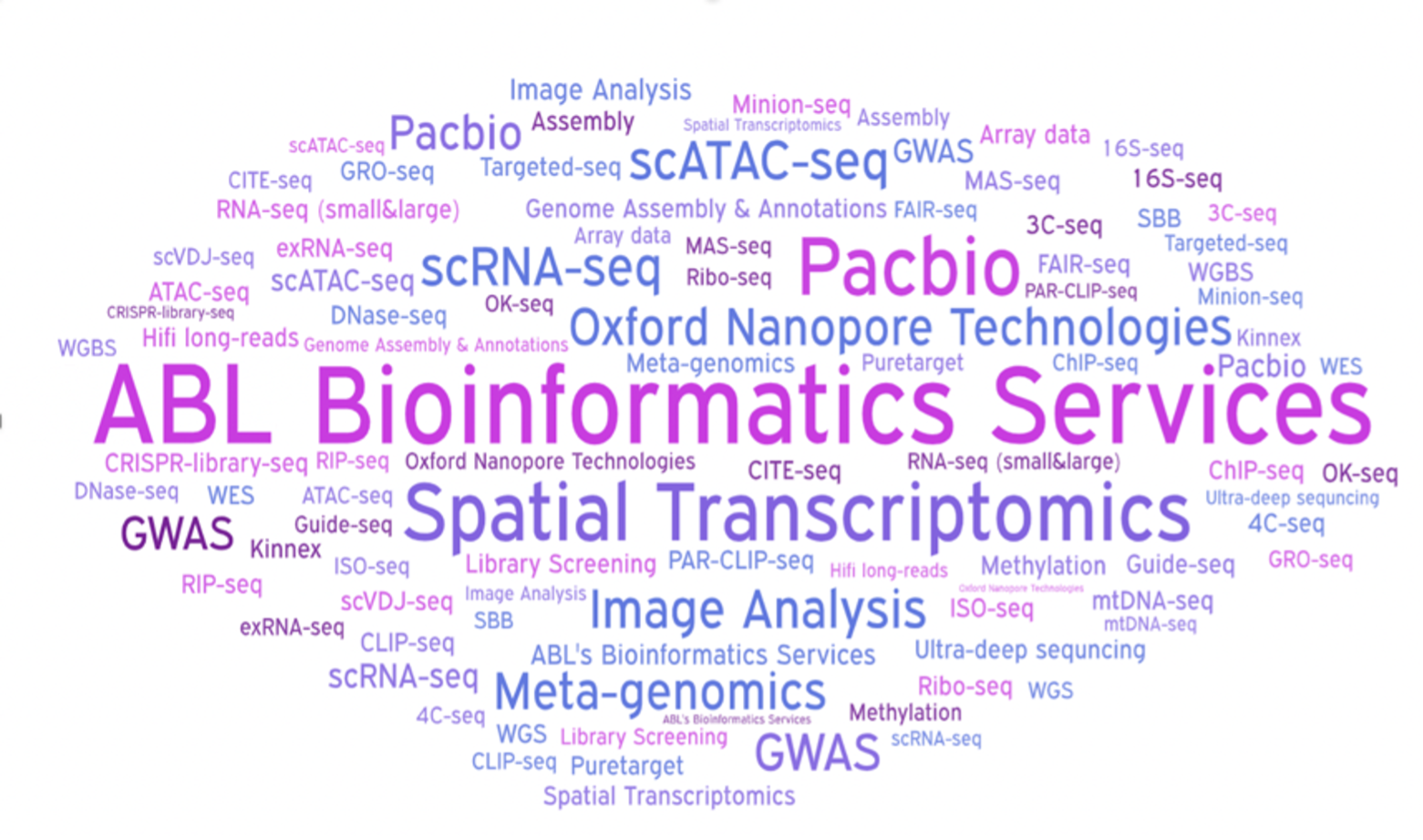
Applied Bioinformatics Laboratories Services
Our expertise spans a wide range of biomedical data, including the analysis of next- and third-generation sequencing data, multi-omics, image analysis, and clinical datasets. We also specialize in developing software and pipelines to support your research needs.
We employ cutting-edge machine learning techniques combined with artificial intelligence to streamline and automate the analysis of large-scale data. By analyzing thousands of samples each year and collaborating with numerous laboratories, we have established a strong track record of productivity, contributing to hundreds of impactful publications.
It is our pleasure to support you in both your grant applications and your research, ensuring reproducible results at every stage.
To request our data analysis services, please use iLab
Don’t hesitate to reach out to us directly to discuss potential project collaborations.
